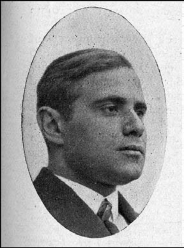- WAGNER H
- AUSTRIA (see also List of Individuals)\
 22.5.1900 Graz/A - 28.5.1982 Corona del Mar/USA\Herbert Wagner entered the K.K Austrian Naval School in Trieste in 1915 and studied after World War I at the Technical Universities of Graz and Berlin. He graduated from the latter as a naval engineer in 1922 and received the PhD title in 1924 for a study on the dynamic lift of wings. He then joined the aviation works Rohrbach in Copenhagen. Wagner was appointed professor of aviation at Danzig Technical University in 1928, and in 1930 moved in the same position to Berlin Technical University. From 1935 he collaborated with Junkers aviation works in Dessau. In 1940 Wagner left for Henschel aviation works to develop rockets. After World War II Wagner moved to the United States to continue as a successful researcher in space flight. In 1957, he returned to Germany as a professor of technical mechanics, thereby continuing collaboration with his American friends. Wagner was awarded the Honorary Doctorate from Berlin Technical University in 1960 and was from then also a council member of Wissenschaftliche Gesellschaft für Luftund Raumfahrt WGLR.\Wagner was a professional multi–talent and contributed to both theoretical and practical aspects of flight and rocketry. His PhD thesis responded to the question of aerodynamic lift by the description of the vortex structure at incipient motion. He also devised a method to compute circulation about a wing profile. In the 1930s, Wagner took interest in light construction of airplanes by using welded aluminium. During his Berlin years, Wagner investigated problems of mechanical resistance and impact and sliding processes at fluid boundaries. During his years with Henschel, Wagner developed remote controlled rockets such as Hs293 developed in 1940 with a successful launching in 1942. During his stay in the US, Wagner realized the significance of electronics in space flight, and was at the forefront of these developments. Wagner spent his last years in Vienna but moved to California for the excellent climate, where he passed away.\Bock, G. (1965). Herbert Wagner 65 Jahre. Zeitschrift für Flugwissenschaften 13(6): 224. PBrée, R., Schulz, W. (1982). Herbert Wagner. Jahrbuch der DGLR (65): 51-54.Heinerling, W. (1984). Prof. Dr.-Ing. Dr.-Ing.E.h. Herbert Wagner. Luftund Raumfahrt 5(3): 89-90. PWagner, H. (1925). Über die Entstehung des dynamischen Auftriebes von Tragflügeln. ZAMM5(1): 17-35.Wagner, H. (1929). Zur Mechanik des Starts und der Landung von Seeflugzeugen. Schiffbau30(14): 343-348. P
22.5.1900 Graz/A - 28.5.1982 Corona del Mar/USA\Herbert Wagner entered the K.K Austrian Naval School in Trieste in 1915 and studied after World War I at the Technical Universities of Graz and Berlin. He graduated from the latter as a naval engineer in 1922 and received the PhD title in 1924 for a study on the dynamic lift of wings. He then joined the aviation works Rohrbach in Copenhagen. Wagner was appointed professor of aviation at Danzig Technical University in 1928, and in 1930 moved in the same position to Berlin Technical University. From 1935 he collaborated with Junkers aviation works in Dessau. In 1940 Wagner left for Henschel aviation works to develop rockets. After World War II Wagner moved to the United States to continue as a successful researcher in space flight. In 1957, he returned to Germany as a professor of technical mechanics, thereby continuing collaboration with his American friends. Wagner was awarded the Honorary Doctorate from Berlin Technical University in 1960 and was from then also a council member of Wissenschaftliche Gesellschaft für Luftund Raumfahrt WGLR.\Wagner was a professional multi–talent and contributed to both theoretical and practical aspects of flight and rocketry. His PhD thesis responded to the question of aerodynamic lift by the description of the vortex structure at incipient motion. He also devised a method to compute circulation about a wing profile. In the 1930s, Wagner took interest in light construction of airplanes by using welded aluminium. During his Berlin years, Wagner investigated problems of mechanical resistance and impact and sliding processes at fluid boundaries. During his years with Henschel, Wagner developed remote controlled rockets such as Hs293 developed in 1940 with a successful launching in 1942. During his stay in the US, Wagner realized the significance of electronics in space flight, and was at the forefront of these developments. Wagner spent his last years in Vienna but moved to California for the excellent climate, where he passed away.\Bock, G. (1965). Herbert Wagner 65 Jahre. Zeitschrift für Flugwissenschaften 13(6): 224. PBrée, R., Schulz, W. (1982). Herbert Wagner. Jahrbuch der DGLR (65): 51-54.Heinerling, W. (1984). Prof. Dr.-Ing. Dr.-Ing.E.h. Herbert Wagner. Luftund Raumfahrt 5(3): 89-90. PWagner, H. (1925). Über die Entstehung des dynamischen Auftriebes von Tragflügeln. ZAMM5(1): 17-35.Wagner, H. (1929). Zur Mechanik des Starts und der Landung von Seeflugzeugen. Schiffbau30(14): 343-348. P
Hydraulicians in Europe 1800-2000 . 2013.
